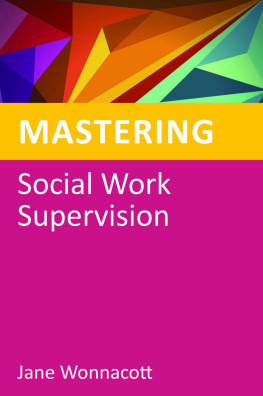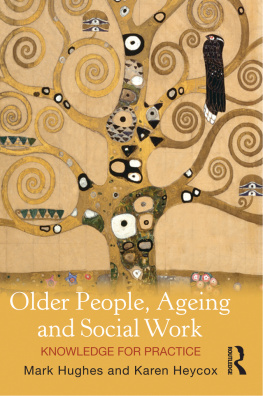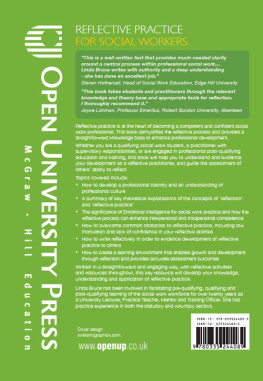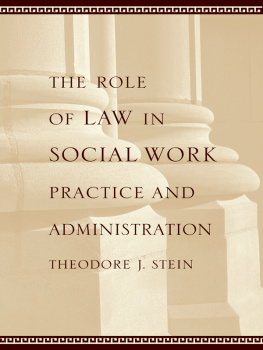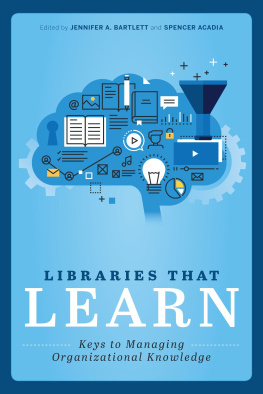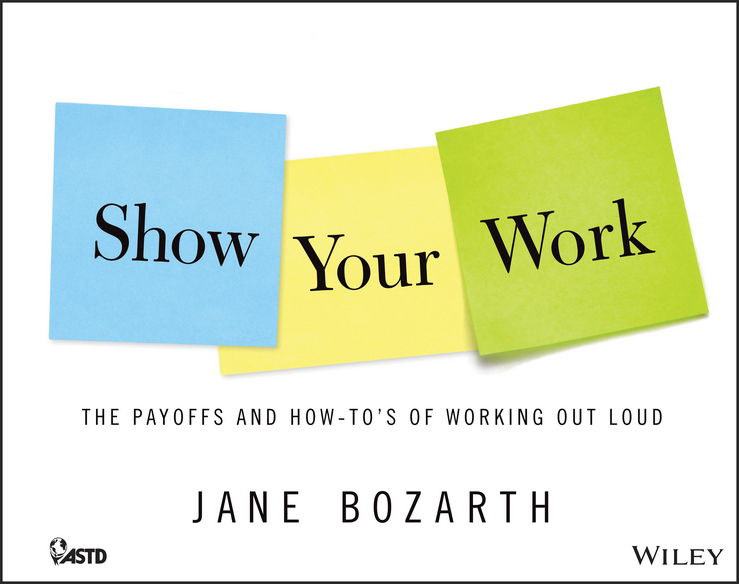
Contents
Pages
Guide
Show Your Work
THE PAYOFFS AND HOW-TOS OF WORKING OUT LOUD
JANE BOZARTH
Copyright 2014 by John Wiley & Sons, Inc. All Rights Reserved.
Published by Wiley
One Montgomery Street, Suite 1200, San Francisco, CA 94104-4594
www.wiley.com
Cover image: Shutterstock
Cover design: Faceout Studio
No part of this publication may be reproduced, stored in a retrieval system, or transmitted in any form or by any means, electronic, mechanical, photocopying, recording, scanning, or otherwise, except as permitted under Section 107 or 108 of the 1976 United States Copyright Act, without either the prior written permission of the Publisher, or authorization through payment of the appropriate per-copy fee to the Copyright Clearance Center, Inc., 222 Rosewood Drive, Danvers, MA 01923, 978-750-8400, fax 978-646-8600, or on the web at www.copyright.com. Requests to the Publisher for permission should be addressed to the Permissions Department, John Wiley & Sons, Inc., 111 River Street, Hoboken, NJ 07030, 201-748-6011, fax 201-748-6008, or online at http://www.wiley.com/go/permissions.
Limit of Liability/Disclaimer of Warranty: While the publisher and author have used their best efforts in preparing this book, they make no representations or warranties with respect to the accuracy or completeness of the contents of this book and specifically disclaim any implied warranties of merchantability or fitness for a particular purpose. No warranty may be created or extended by sales representatives or written sales materials. The advice and strategies contained herein may not be suitable for your situation. You should consult with a professional where appropriate. Neither the publisher nor author shall be liable for any loss of profit or any other commercial damages, including but not limited to special, incidental, consequential, or other damages.
Readers should be aware that Internet websites offered as citations and/or sources for further information may have changed or disappeared between the time this was written and when it is read.
For additional copies or bulk purchases of this book or to learn more about Wileys Workplace Learning offerings, please contact us toll free at 1-866-888-5159 or by email at .
Wiley also publishes its books in a variety of electronic formats and by print-on-demand. Some material included with standard print versions of this book may not be included in e-books or in print-on-demand. If the version of this book that you purchased references media such as a CD or DVD that was not included in your purchase, you may download this material at http://booksupport.wiley.com. For more information about Wiley products, visit www.wiley.com.
Library of Congress Cataloging-in-Publication Data has been applied for and is on file with the Library of Congress.
ISBN 978-1-118-86362-6 (pbk); ISBN 978-1-118-86401-2 (ebk); ISBN 978-1-118-86350-3 (ebk)
Anyone whos diligently followed a written recipe only to have a terrible end result has felt the disconnect between tacit and explicit knowledge.
Introduction
Everybody works. They create documents and presentations. They schedule and attend events. They comment on other peoples work.
John Stepper, johnstepper.com
CALL IT WHAT YOU LIKE
When you were a kid, you likely had a math teacher or two who insisted that you show your work. It enabled him or her to see how you arrived at a final answer, what kind of thinking or steps got you thereand where you might have made a mistake. You can think of showing your work in any terms youd like. Some call it working out loud, making work visible, making work discoverable, or narrating work. There are any number of approaches to showing work, from writing to talking to drawing to photographing and more. And now, with so many new, often free tools people like to use, its easier than ever before.
Showing Your Work Benefits Everyone
In its simplest, most obvious benefit, showing work helps an idea connect with someone else who needs it. The woman in Kansas who finds a YouTube video that helps her change the windshield wipers on her car. The man in London who, in a colleagues blog post, finds an answer to a bedeviling question. In organizations, it makes the walls between silos more permeable, helping talent pools connect and saving workers countless hours in looking for information.
While were good at documenting standards, most of what we need to know is exception handlingwhat we must know and do and respond to thats outside a schematic or process plan or SOP. John Hagel and John Seeley Brown assert that as much as two-thirds of headcount time in major enterprise functions like marketing, manufacturing, and supply chain management is spent on exception handling. (http://blogs.hbr.org/2010/09/social-software/). My own favorite neighborhood handyman, Mike, has never been here when he did not encounter an exception: the hole the builder cut for the attic stairs is not the standard size for the home repair store stairs Mike came to install; a repair to the porch railing found that the standard rails the builder used are no longer in stock, and on and on. Showing our work helps make what we do more visible and discoverableparticularly in the area of exception handlingand helps to record the information for future use.
The Silo Problem

If your dots are not observable/visible/transparent, then its impossible to connect them.
BRIAN TULLIS
The Documentation Problem
Harold Jarche has written extensively on personal knowledge management, particularly the problem with documentation: while its fairly easy to codify things like events and outputs, the tacit, implicit knowledge that is part and parcel of things like decisions is much harder to capture.
The attempt to reduce complexity to simplicity is fine when youre refining the bones of a production process. Its not fine when you assert that leadership is a matter of following four simple steps.
And sooner or later, documentation always breaks down. In the desire to oversimplify we end up with documents that are akin to having a map without landmarks or road signs, with the organization unable to see the routes people really take. (Brown & Duguid, 1990). We know what to do but not how it gets done. We need better maps.
Codifying Knowledge
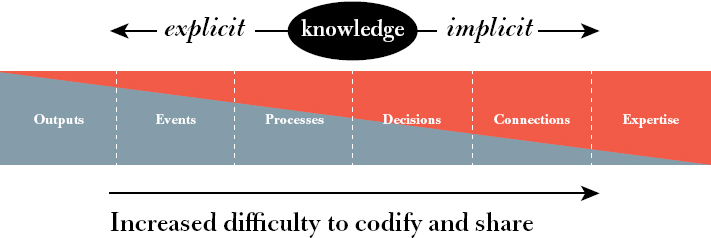
Thanks to Harold Jarche jarche.com
SHOWING YOUR WORK ISNT NEW
A thousand years ago a wanderer who drew a map at journeys end might be described as someone who showed their work. Apprenticeship in many ways offered a show your work approach, with the inclusion of instruction and feedback. Electronic tools introduced in the late 20th century made showing work much easier, as many of this books examples will show.
SHOWING YOUR WORK ISNT MYSTICAL
One of the problems with the literature on showing work is that much of it is just too abstract and conceptual, with complex models and illustrations with maps and loops and actors. While the models may in some ways be accurate, and often in good intentions reflect the creators enthusiasm, they dont seem to be very
Next page

